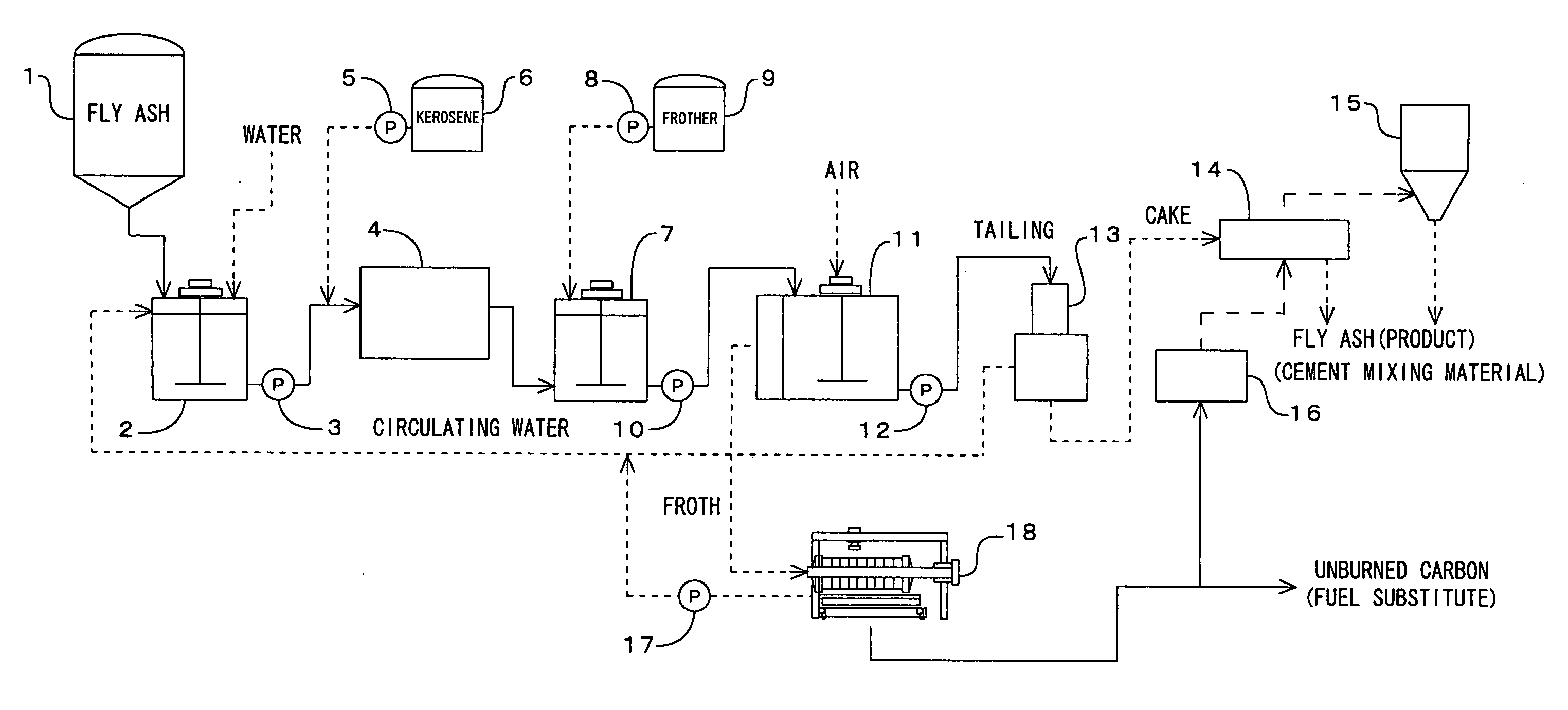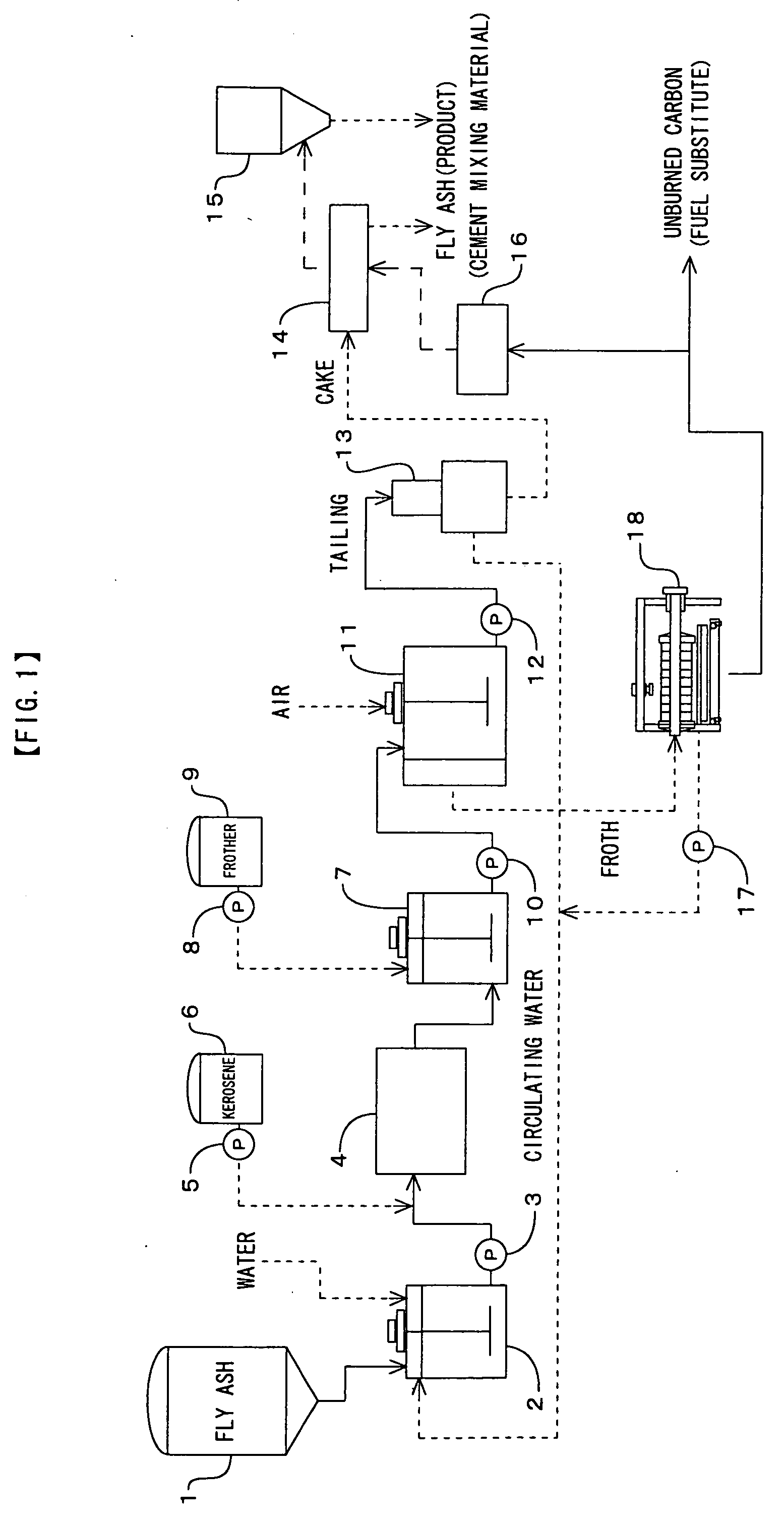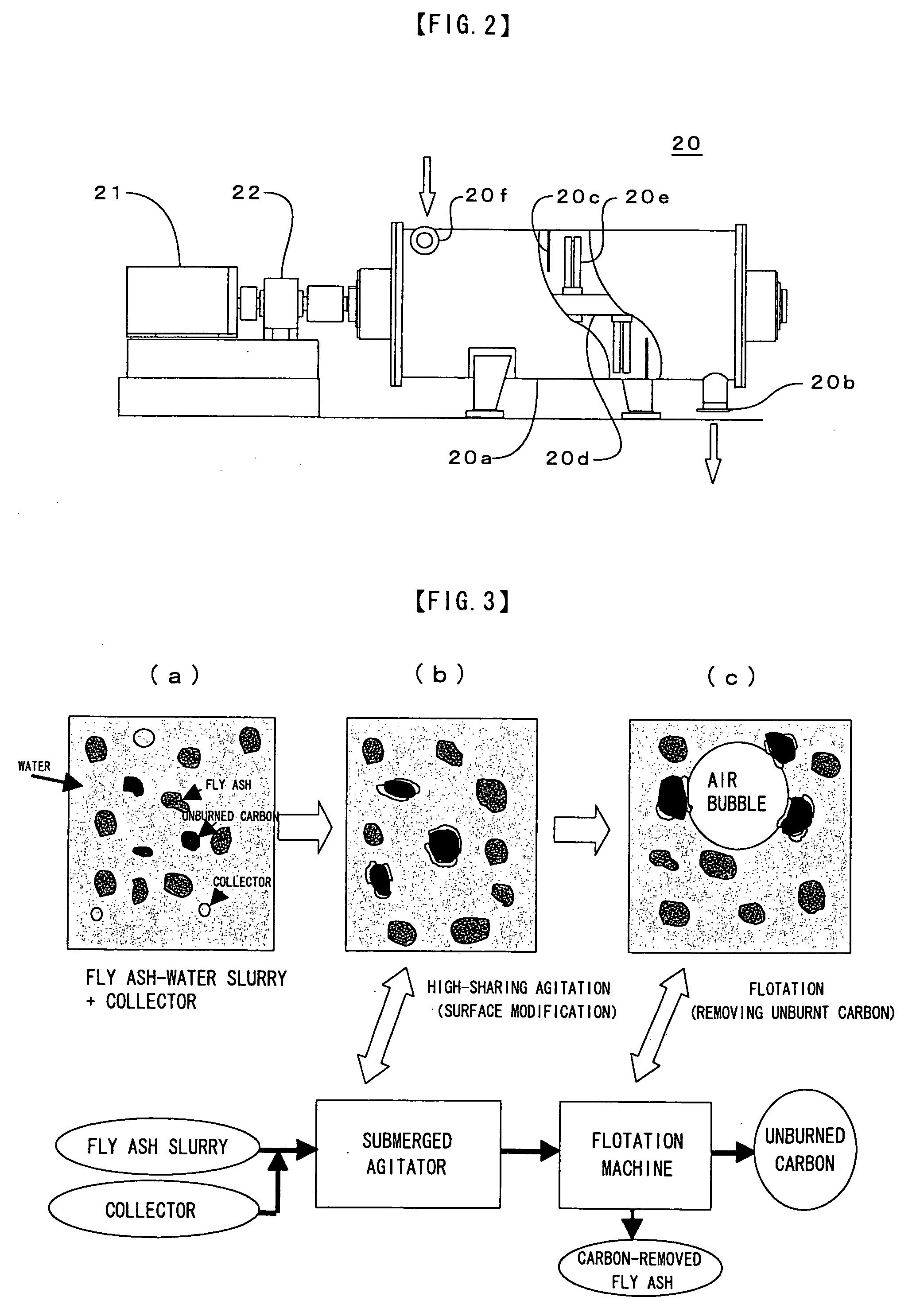Fan-In Leadframe Semiconductor Package
a semiconductor package and fan technology, applied in liquid degasification, separation processes, lighting and heating apparatus, etc., can solve the problems of unburned carbon floating, affecting the workability of concrete, and affecting the effect of a black part occurring in the connecting portion of concr
- Summary
- Abstract
- Description
- Claims
- Application Information
AI Technical Summary
Benefits of technology
Problems solved by technology
Method used
Image
Examples
embodiment 1
[0039] 1000 ml of water and 200 g of fly ash (containing 5.0 weight percent of unburned carbon) are mixed while being agitated to produce slurry. To the slurry is added kerosene in the range of 0.6-8.0 ml and is agitated at 0-1164 rpm by the high-speed shearing mixer showing in FIG. 2 to add shearing force to the slurry and the kerosene, and unburned carbon of the fly ash is made to be hydrophobic.
[0040] After the process of hydrophobic, the slurry is supplied to a flotation machine, and 0.5 mg of MIBC (methyl isobutyl carbinol) as a frother is added to the slurry to make the unburned carbon adhere to air bubbles and rise. These floating air bubbles are taken out as overflow. This process has been performed for 5 minutes.
[0041] The relation of the rotational frequency of the high-speed shearing mixer and the unburned carbon of fly ash (product) and fly ash (product) remaining inside of a flotation tub is shown in FIG. 4. Showing this graph, without agitation (the rotational freque...
embodiment 2
[0042] 1000 ml of water and 200 g of fly ash (containing 5.0 weight percent of unburned carbon) are mixed while being agitated to produce slurry. To the slurry is added kerosene in the range of 0.6-8.0 ml and is agitated at 873 rpm by the high-speed shearing mixer showing in FIG. 2 to add shearing force to the slurry and the kerosene, and unburned carbon of the fly ash is made to be hydrophobic.
[0043] After the process of hydrophobic, the slurry is supplied to a flotation machine, and 0.5 mg of MIBC as a frother is added to the slurry to make the unburned carbon adhere to air bubbles and rise. These floating air bubbles are taken out as overflow. This process has been performed for 5 minutes.
[0044] The relation of the amount of kerosene added and the unburned carbon of fly ash (product) and fly ash (product) remaining inside of a flotation tub that is shown in FIG. 5. This graph shows that the unburned carbon of fly ash (product) reaches to 0.5% or less in the oil-adding ratio of ...
PUM
| Property | Measurement | Unit |
|---|---|---|
| weight percent | aaaaa | aaaaa |
| weight | aaaaa | aaaaa |
| shearing force | aaaaa | aaaaa |
Abstract
Description
Claims
Application Information
 Login to View More
Login to View More - R&D
- Intellectual Property
- Life Sciences
- Materials
- Tech Scout
- Unparalleled Data Quality
- Higher Quality Content
- 60% Fewer Hallucinations
Browse by: Latest US Patents, China's latest patents, Technical Efficacy Thesaurus, Application Domain, Technology Topic, Popular Technical Reports.
© 2025 PatSnap. All rights reserved.Legal|Privacy policy|Modern Slavery Act Transparency Statement|Sitemap|About US| Contact US: help@patsnap.com



